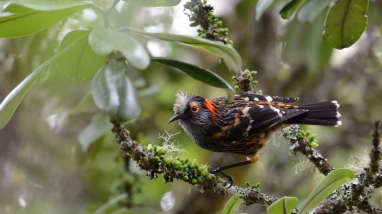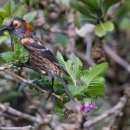Distribution: Increases in climate favorable to mosquitoes have restricted ʻākohekohe to the absolute highest native forest habitats available in East Maui. ʻĀkohekohe occur in a very narrow, high elevation band in the highest elevation ʻōhiʻa forests, especially in The Nature Conservancy’s Waikamoi Preserve, Hanawī Natural Area Reserve, and Manawainui within Haleakalā National Park.
Behavior: ʻĀkohekohe can be very aggressive and are at the top of the nectarivore food chain now. They have a relatively higher reproductive rate, but they did not do well in captive breeding when a small number of eggs were collected and reared in the late 1990s.
Current Status: Estimated wild population in 2021 is 1,657 individuals. There are no ʻākohekohe in captivity. Estimated year of extinction is 2026 to 2037, most likely 2032.
Link to ECOS ECOS
Environmental Conservation Online System (ECOS) serves a variety of reports related to FWS Threatened and Endangered Species.
Learn more about ECOS https://ecos.fws.gov/ecp/species/3089




